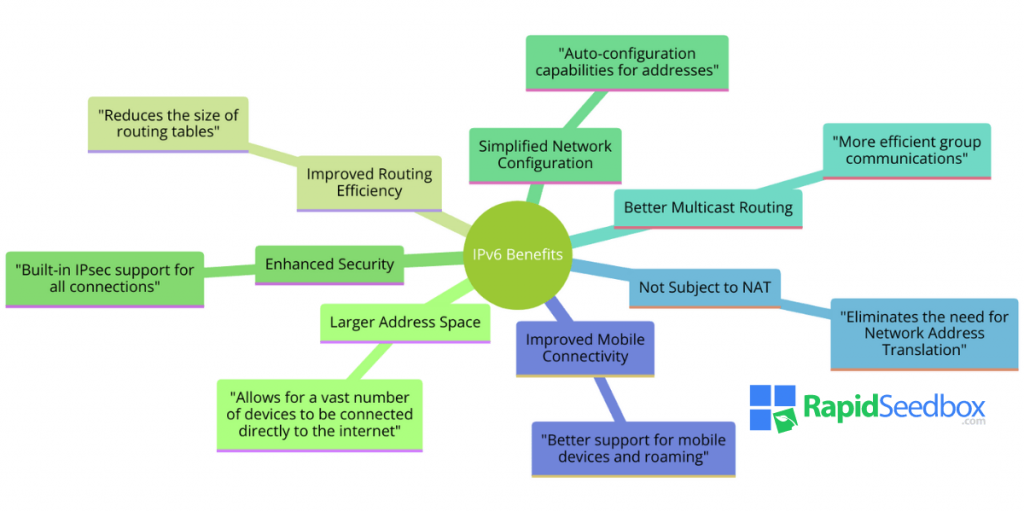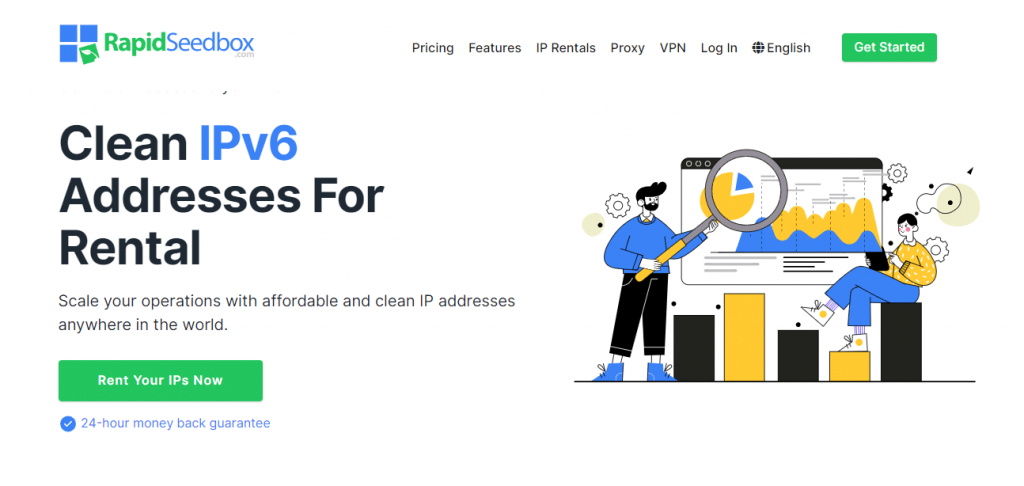As an expert in networking and data privacy, I have firsthand experience navigating the intricacies of several Internet Protocol versions, especially the switch from IPv4 to IPv6.
This change is an essential progression to meet the increasing needs of the digital world, not only a technical improvement.
Let me walk you through why this transition is happening and how it impacts us all.
Table of Contents
- Why Are We Currently Undergoing a Switch from IPv4 to IPv6?
- IPv6 Benefits
- What do You Need to Transition from IPv4 to IPv6
- Final Words
1. Why Are We Currently Undergoing a Switch from IPv4 to IPv6?
We’re transitioning from IPv4 to IPv6 due to IPv4’s limited address space, unable to meet the growing demand for internet-connected devices. IPv6 offers a vastly larger address pool, ensuring every device can have a unique IP, enhancing internet scalability and security for the foreseeable future.
a. IPv4 Limitations
IPv4 has been the backbone of the internet since its inception. Designed in the early 1980s, it uses a 32-bit address scheme, which theoretically allows for about 4.3 billion unique addresses.
This seemed more than plenty at the moment. However these addresses have run out due to the internet’s exponential expansion and the spread of smart devices. This constraint became more evident to me when I was building up networks and had to deal with the difficulty of getting a unique public IPv4 address. The latter is also becoming more expensive.
b. The Birth of IPv6
IPv6 was developed by the Internet Engineering Task Force (IETF) to address this shortage. It uses a 128-bit address scheme, which significantly expands the number of available addresses. To put this into perspective, IPv6 can support approximately 340 undecillion addresses – that’s a number with 36 zeros! We can link billions of gadgets directly to the internet thanks to this enormous pool of unique addresses.
2. IPv6 Benefits
The switch to IPv6 isn’t just about addressing the shortage. IPv6 introduces several improvements compared to IPv4:
- Easier network configuration: IPv6 supports auto-configuration, making it easier to add devices to a network.
- Improved security: With security in mind, IPv6 integrated technologies such as IPsec, which offers data integrity, confidentiality, and authentication.
- Better performance: IPv6 reduces the need for Network Address Translation (NAT), allowing for direct addressability and potentially improving end-to-end connection performance.

Personal Experience with IPv6
As an IPv6 user, I’ve noticed a smoother experience in configuring networks and a noticeable improvement in security measures. There are certain difficulties during the transition period, such as upgrading hardware and software to support IPv6, but the long-term advantages outweigh by a lot these brief difficulties.
3. What do You Need to Transition from IPv4 to IPv6
Making the switch from IPv4 to IPv6 is necessary for your network’s security and scalability. However, you’ll need to consider several factors first.
Below, you’ll find the basic steps you need to guarantee an easy transition and future-proof your infrastructure. For a more detailed explanation, check out the best practices for transitioning to IPv6.
a. Update Network Infrastructure
To support IPv6, start by evaluating and upgrading your routers, switches, and firewalls. Hardware replacements or firmware updates may be necessary for this. Refer to the manufacturer’s documentation for guidance on IPv6 compatibility.
b. Check Software Compatibility
Make sure your apps, management tools, and operating systems are ready for IPv6. On the bright side, the majority of modern software support IPv6. However, it’s important to look for updates or patches that improve IPv6 operation.
c. Educate and Train Your Team
Your team has to understand the IPv6 features, such as its addressing scheme and configuration options. Provide your IT team with training sessions so they can get familiar with IPv6 operations and troubleshooting.
d. Acquire IPv6 Addresses
You’ll also need to obtain IPv6 addresses for your network. Internet Service Providers (ISPs) can assign these, but for specialized needs or enhanced privacy, consider a dedicated server provider like Rapidseedbox. The company offers robust IPv6 support, providing a smooth transition and secure connections.

e. Implement Dual Stack Configuration
Running IPv4 and IPv6 in parallel, known as a dual-stack configuration, lets you transition gradually. This setup will guarantee compatibility with both protocols during the migration phase.

f. Test and Validate
Make sure all services function properly over IPv6 by thoroughly testing them before finalizing the transfer. This covers internet-facing services, external partner connectivity, and internal apps.
Never run out of address space again with RapidSeedbox IPv6 rental services.
We provide the addresses, expert support, and even servers if needed. Take your business into the future of security and reliability today.
—————
4. Final Words
For the internet, the transition from IPv4 to IPv6 marks an important step forward. Along with addressing the important problem of IP address exhaustion, it improves network setup, security, and performance.
The migration to IPv6 is necessary for the internet to continue growing and evolving, even though it will take work and adaptation. By embracing this shift, we’re building the digital infrastructure for the future rather than just resolving a technical issue.
0Comments